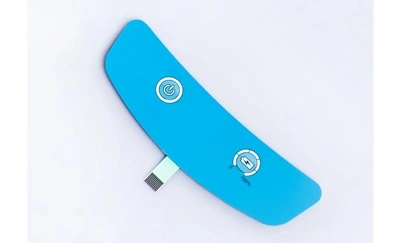
In today's fast-paced technological era, customized membrane switches have become an integral part of various industries. These sleek and versatile control interfaces are commonly found in applications ranging from medical devices to industrial machinery. In this article, we will delve into the world of customized membrane switches, exploring their functionality, applications, advantages, and the process of designing them. So, let's embark on this journey to discover the innovation behind these tactile wonders.

Membrane switches are user interface devices that consist of multiple layers of flexible materials. They are engineered to provide a seamless and responsive way for users to interact with electronic devices. These switches are primarily composed of three layers:
Graphic Overlay: The top layer of the membrane switch is the graphic overlay, which features the printed design and labels for various functions. It is typically made of materials like polyester or polycarbonate, ensuring durability and resistance to wear and tear.
Spacer: Beneath the graphic overlay lies the spacer layer. This layer is responsible for the tactile feedback users experience when pressing the buttons on the membrane switch. It is designed to provide a responsive and comfortable feel.
Circuit Layer: The bottom layer houses the circuitry, which comprises conductive traces and contacts. When a user presses a button, it makes contact with the circuit layer, completing the electrical circuit and registering the input.
Customized membrane switches take the functionality of standard membrane switches a step further by allowing businesses to design switches that perfectly suit their unique requirements. Whether it's the shape, size, or the specific functions needed, customization ensures that the membrane switch aligns with the intended application.
Enhanced Branding: Businesses can incorporate their logos, branding elements, and color schemes into the graphic overlay, creating a cohesive and professional look for their products.
Optimized Functionality: Customization allows for the inclusion of specialized features such as backlighting, embossing, or integrated LED indicators, enhancing user experience.
Durability: Tailored membrane switches can be designed with materials that offer resistance to harsh environmental conditions, ensuring longevity and reliability.
Customized membrane switches find applications in various industries due to their adaptability and versatility. Some notable sectors where these switches are extensively used include:
1. Medical Devices
In the healthcare industry, customized membrane switches are employed in diagnostic equipment, patient monitoring devices, and medical instruments. They offer a reliable and user-friendly interface for healthcare professionals.
2. Industrial Control Panels
Customized membrane switches are the preferred choice for industrial control panels due to their resilience against dust, moisture, and extreme temperatures. They are vital in ensuring the efficient operation of industrial machinery.
3. Consumer Electronics
From microwave ovens to remote controls, customized membrane switches are found in various consumer electronic products. They provide a sleek and intuitive user interface for everyday devices.
Designing a customized membrane switch involves several key steps:
1. Requirements Analysis
Begin by identifying the specific requirements of your application. Consider factors like the number of buttons needed, the desired layout, and any special features required.
2. Material Selection
Choose the appropriate materials for each layer of the membrane switch. Select materials that match the environmental conditions and usage demands.
3. Graphic Design
Work on the graphic overlay design, ensuring that it reflects your brand and provides clarity to users. Pay attention to the placement of labels and indicators.
4. Prototyping
Create a prototype of the customized membrane switch to test its functionality and user experience. Make any necessary adjustments based on feedback.
5. Production and Quality Control
Once the design is finalized, move into production, ensuring strict quality control measures are in place to maintain consistency and reliability.
Customized membrane switches have revolutionized the way we interact with electronic devices. Their adaptability, durability, and versatility make them indispensable in numerous industries. By understanding the design process and the advantages of customization, businesses can harness the full potential of membrane switches to enhance their products and brand identity.
Now that you've gained insight into the world of customized membrane switches, you're ready to explore the possibilities of integrating these cutting-edge interfaces into your own projects. If you're looking to take the next step in optimizing your product's user interface, consider customized membrane switches as a practical and efficient solution.
1. What are the primary benefits of using customized membrane switches?
Customized membrane switches offer enhanced branding opportunities, optimized functionality, and durability, making them ideal for a wide range of applications.
2. Can customized membrane switches withstand harsh environmental conditions?
Yes, by selecting the appropriate materials during the customization process, membrane switches can be designed to resist dust, moisture, and extreme temperatures.
3. How can I ensure that my customized membrane switch design is user-friendly?
Careful graphic overlay design, prototyping, and user testing are essential steps to ensure that the membrane switch offers an intuitive and comfortable user experience.
4. What industries commonly use customized membrane switches?
Customized membrane switches are prevalent in the medical, industrial, and consumer electronics industries, among others, due to their adaptability and versatility.